Bird Watching in the City of Kingston
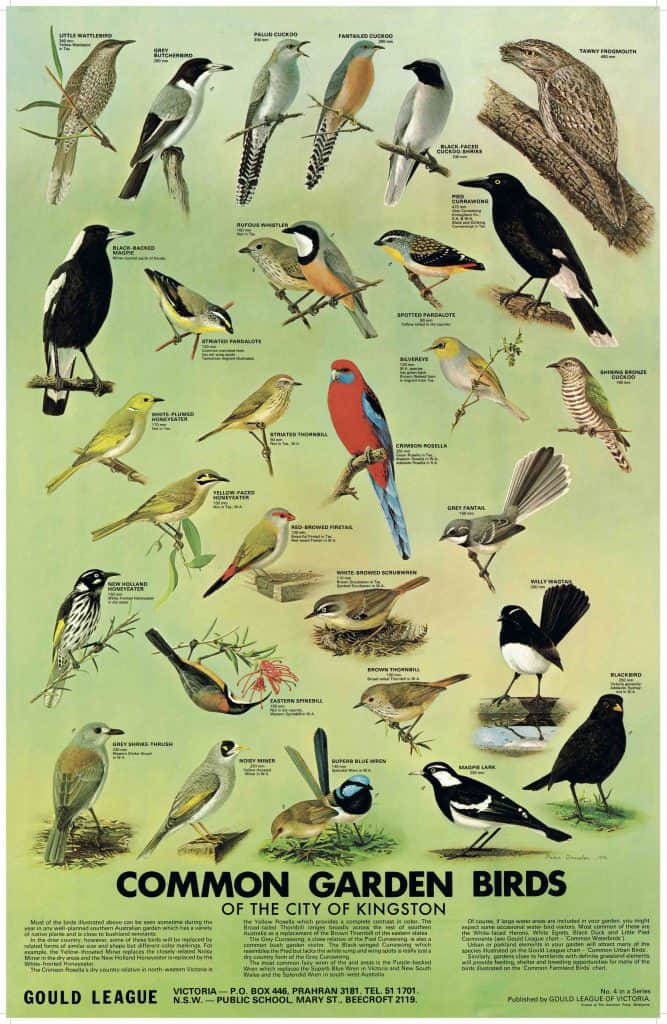
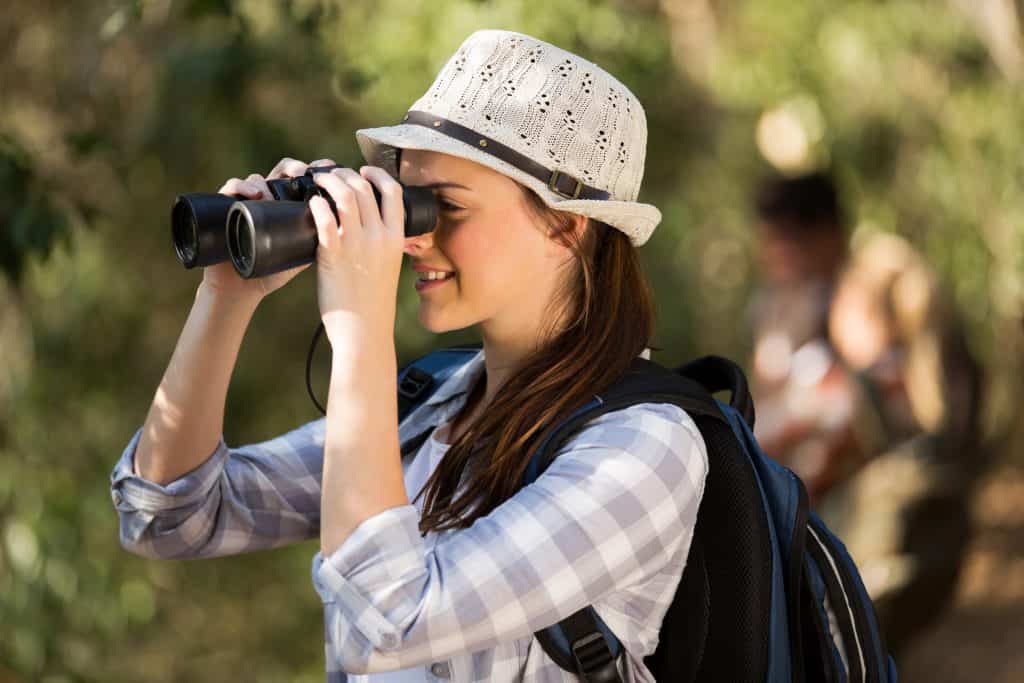
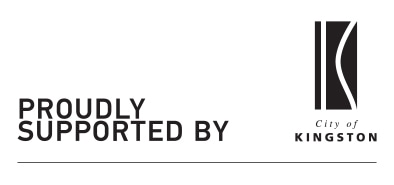
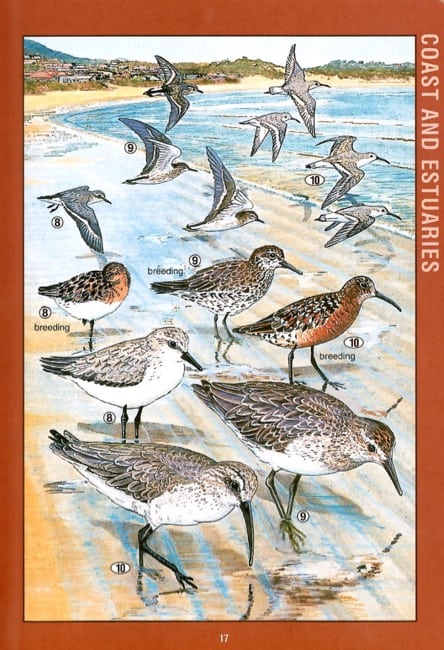
When founded in 1909, we were “The Gould League of Bird Lovers”. Paying homage to our history and because our Sustainability Centre at Cheltenham is in the heart of the City of Kingston, we developed a series of resources to encourage visitors to our Cheltenham centre as well as residents of the City of Kingston – to enjoy time in nature by exploring birds in their backyards, parks, gardens and beaches. If you live outside this area it does not matter, as you can use the resources and enjoy birdwatching where ever you live, work or play!
Bird watching is a rewarding past-time that can be enjoyed by all. It is an excellent activity you can do in your own back yard (great to get the kids off their screens for a while or if you are forced into isolation) or whilst getting fresh air and exercise at your local park, in suburban streets or at the beach. Best of all It’s easy to do with safe social distancing of others including wildlife – so you could say it’s one of the few Covid safe activities you can enjoy anywhere anytime!
The City of Kingston is fortunate to have a wide range of natural habitats that are home to a wide variety of birds. Whether you are a seasoned bird watcher with many observations and identifications under your belt, or a true beginner simply wishing to enhance recreational time in nature, we can provide information and materials to assist your bird watching endeavours.
For the Beginner
There are many ways that you get started into bird watching. Learning what they look like and the calls they make is a great way to start. Check out this poster to see how many you can identify! Learn what sounds they make here.
Birdwatching can be done either individually or as a group and can be a wonderful way to get out to explore your surrounds or simply make a daily walk for fresh air and exercise (especially in lockdown) into an adventure. There are various methods you can use. As a beginner following our simplified survey forms with the aid of our common bird species identification guide or our full guide of birds found in Southeastern Australia, allowing you to get the most out of quick visits to any of the main habitats found within the City of Kingston.
Although many species can be found across all these habitats, certain species make their home in specific areas and each species guide will help you quickly identify the most common species found in each respective habitat. A rewarding aspect of bird watching can be to observe and record changes over time and between seasons. Where possible we recommend that you repeat your surveys in as similar way as possible throughout the year in order to develop your awareness around seasonal changes in bird numbers, the different species present at different times as well as changes in bird behaviour. Our surveys allow you to include all this information and compare it at a later date.
For the Experienced Surveyor
Bird watching can be a rewarding and exciting pursuit. We have provided resources to assist you to increase the accuracy and consistency of your data and to enable you to add it to national and international databases (Citizen Science). The survey sheets provided will allow you to create repeatable data sets each time that you complete a survey so that comparisons over time can be made and trends identified. Your data could also then be transcribed into various formats that will allow you to contribute to citizen science.
Habitats in Kingston
The City of Kingston is home to a wide range of habitats that are occupied by a great variety of species. Each different habitat provides sustenance, protection and shelter to its own unique bird population.
Beach & Coastal Areas

Locations on Kingston’s coastline such as Chelsea Beach and Bonbeach are home to wading and shore birds such as Pelicans, Gannets, various species of Gulls and even Black Swans. The beach and shoreline can be a great place to spot birds as there are wide open spaces and fields of view. Also, many bird species feel safe when on or around water meaning they often move slower or less frequently making reliable identification easier. For these reasons, a coastal area can be a great place for beginners to start their bird watching experience.
Backyards and Suburban Streets
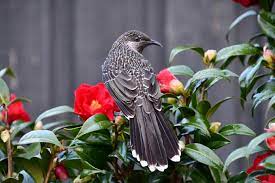
Even suburban areas can provide a habitat for a wide range of species. In some cases urban areas can have higher numbers of species than natural habitats as people plant out a wider range of flowering plants, different manmade structures also provide a greater range of habitats and nesting sites than natural areas alone. There have been many cases of birds nesting in man-made structures from letterboxes to garden sheds and in roofs. They also often more food sources than natural areas alone as humans either intentionally or accidently leave additional food out for birds and other wildlife. Although such feeding locations create artificial groupings of species they can provide an excellent way to get an idea of the most common species in your location as well as possibly drawing out some of the rarer individuals.
Freshwater Wetlands
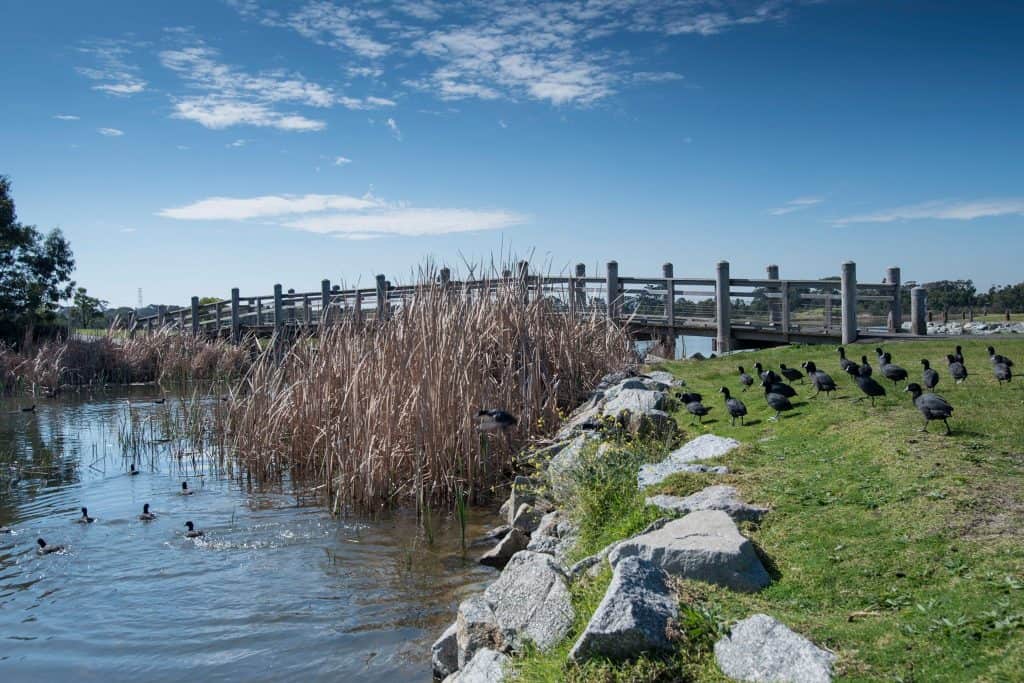
As with coastal areas, freshwater wetlands provide habitat for a wide range of bird species. Within the City of Kingston, the Edithvale-Seaford Wetlands Environment is a prime example of this type of habitat. It is estimated that at any one time, as many as 7,000 birds make the Edithvale-Saeford Wetland their home.
Start attractions include 190 bird species, 38 migratory species protected under international agreements and Australian legislation and migratory waders including Latham’s Snipe from the norther islands of Japan.
Seven bird species recorded at the wetland are protected under the Flora and Fauna Guarantee Act 1988 (Vic) include: Great Egret, Australasian Bittern, Baillon’s Crake, Lewin’s Rail, White-bellied Sea-Eagle, Australian Painted Snipe, Caspian Tern.
The wetland is also home to a mob of Eastern Grey kangaroos, and circled by an extensive walking and bicycle path that is ideal for birdwatching.
The Patterson Lakes area also provides such a habitat although in a more suburban setting. Long sight lines and the fact that many bird species feel secure when on or near water can provide easy viewing of many species. As many bird species feel safe around water, the setting can also allow for more accurate identification during surveys. The most difficult aspect of surveying wetlands can be the dense vegetation found along the borders of the waterways. Getting an accurate survey completed can therefore often take patience and keen observation to ensure that all species are accounted for.
Parks and Reserves
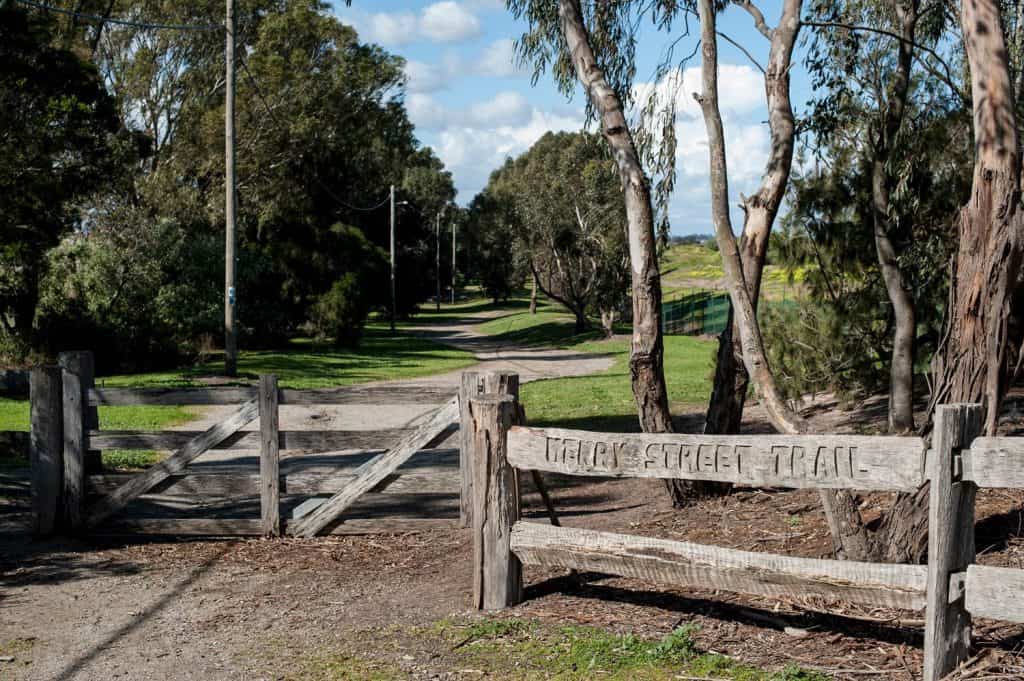
When many people think of bird watching the picture being out in a woodland setting surrounded by large trees. Although such a setting a prime habitat for many species from Kookaburras to Rossellas birds it can often be the hardest setting to perform accurate surveys within. This is due to the thick leaf coverage and the fact that many species that inhabit these areas make their homes high up in the crowns of the trees.

Given the high species richness within this type of habitat and the often limited windows to identify the species it can often take some experience and knowledge to produce and accurate and reliable survey from this habitat.
There are many parks and reserves in the City of Kingston including 114 playgrounds for children.
Some of the larger more popular parks include Bicentenntial Park (also known as Mount Chelsea. Kingston Heath Reserve Cheltenham,
Victory Park Chelsea, Peter Scullin Reserve Mordialloc, Turner Road Reserve (Highett Reserve) Highett, Victory Park next to the beach at Chelsea and The Grange Reserve (UFO Park).
Why not visit one of these amazing locations today to get started on your birdwatching adventure!
Activities for those with Children
Bird watching with children can be a great way to get them outdoors and into nature. It can also be a wonderful introduction into scientific studies through recording the birds observed and performing repeat surveys. This can be done with the aid of our simplified survey form found here.
A little care and preparation should be taken prior to your first bird watching outing with young, budding bird watchers. This way you can ensure that the outing is a successful and rewarding experience for all involved. Before heading out, some time should be taken to familiarise yourself and the children with the most likely to be encountered bird species to help them to have a reasonable expectation of what they are likely to see. A few additional skills that could be encouraged in children could be:
- To move slowly and quietly as birds are easily spooked.
- To only speak quietly.
- To have their listening ears turned on to listen out for the calls of the different birds.
- Encourage them look all around as birds travel can be on any level.
The outing should ideally start directly from your front door and take in as many bird rich habitats as possible, for instance, flowering plants, open reserves, or bodies of freshwater. This will hopefully provide an exciting and entertaining first outing.
As time goes on additional skills can be introduced as the children understand the basics and continue to enjoy the outings. These could include:
- Noting not just the species but also what the birds are doing.
- Identifying birds by their calls instead of just by sight.
- Collecting information on the numbers of the different species seen not simply the species. This can be started with the easiest to identify or most common species and slowly be expanded to include others.
Upon returning from a bird watching outing there are several things that can be done to follow up on a successful survey. The key point would be to follow up on any species that could not be identified in the field and with the aid of identification guides to create a positive identification. If more than one record sheet was being used, the data can then be combined to get a complete record of all the bird species observed.
If you think that an easier introduction is required or if you hope to get younger children involved, there is a more simplistic survey that could be done. Instead of performing a bird survey a basic survey of the types and quality of bird habitats can be performed – or simply come home and check them off from the poster provided. An ideal habitat for many bird species would include, open grassy areas for feeding, leaf litter to look for additional food in, water for bathing and drinking, tall trees to rest in and thicker vegetation or plants to hide or nest in. A basic survey could be simply walking down a street and marking down which house numbers provide the richest range of habitat features. This can be done on our habitat survey form.
For those who like to draw, here’s a few great drawing activity sheets.
There are many other activities that can be done with budding young scientists. These can range from mini beast hunts, to plant surveys and a wide range of others. A full list with accompanying activity sheets can be found here.
Special Times of the Year
Mating Season
Many bird species have complex and often beautiful mating and courtship displays. For some species of bird this is to reconfirm their bond between male and female as many species pair for life. For other species it is a way for the male to show off its strength and fitness to the female in the hope of being allowed to mate with her. These displays can provide a wonderful specitical both in terms of the behaviour shown by both sexes but in particular the male as well as the plumage that he will be displaying. As these displays are often performed in prominent locations or even out in the open to allow as many females to see them as possible. Although during such displays a surveyor might not observe any new species or even greater numbers of common species it is often unique behaviour only observed during these short courtship periods.
Nesting can provide new opportunities for bird watching (you often see new behaviours), although care needs to be taken to never scare away a bird sitting on their nest. You should also never touch bird eggs or their nest as the parent may abandon them.
For many bird species the female will inhabit the nest while the male has the responsibility to feed both her and the chicks once they are hatched. If a nest site can be identified it will allow for repeated sightings of both the male and female of a pair.
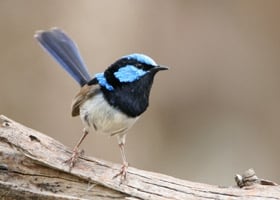
Did you know the adult male Superb Fairy-wrens are among the most brightly coloured of the species, especially during the breeding season? They have rich blue and black plumage above and on the throat. Their belly is grey-white and the bill is black. Females and young birds are mostly brown above with a dull red-orange area around the eye and a brown bill. Females have a pale greenish gloss, absent in young birds, on the otherwise brown tail. The legs are brown in both sexes. Males from further inland and in the south-west of the great dividing range have more blue on the back and underparts.
If you want to attract Superb Fairy-wrens to your garden, they like to live in bushy trees or thickets with prickly branches or leaves about a meter off the ground to provide a place to retreat from danger (especially cats) and build a nest. They like to eat insects, especially grasshoppers so have an area of lawn or leaf mulch to attract insects as a readily available food supply for them and avoid using garden pesticides which kill insects. In summer, don’t forget to provide a tub of water so they can bath and drink from it!
Don’t be surprised if one colourful male seems to be accompanied by a harem of brown birds. These are actually juvenile males and females and a breeding female. Keep an eye out on the males, it’s not unusual for them to fight their own reflection in windows during the breeding season!
For details on how to attract birds and wildlife into your garden download a copy of “Kingston – Gardens for Wildlife.”
Migrations
At different times of year different species of birds can be observed in large flocks as they move between their main habitats these could be specific feeding grounds, specialised areas for nesting or even just movement relating to the change in seasons. Although it can be hard to accurately record the number of birds in a large flock, especially when they are in motion, seeing large flocks of birds can be a joy for watchers of all levels especially for younger watchers just getting started.
One migatory bird you may find around the City of Kingston beaches is that of the Orange-bellied Parrot. The Orange-bellied Parrot is a migratory bird which breeds in summer in Tasmania and migrates in autumn to the Victorian coast. The parrots spent winter dispersed in areas of coastal saltmarsh from Melbourne to the Coorong in South Australia, in which they forage for the tiny seeds of saltmarsh plants.
Experienced Surveyors can Contribute to Citizen Science
Once you are confident with species identification and have developed a good survey technique you can take your surveying to the next level. There are several organisations that have developed online databases that allow you to participate in citizen scientists and input your data and share it with other bird watchers both locally and further a field. Many of these sites also encourage you to upload any pictures of the species that you observe. This not only helps other bird watchers understand what some of the rarer species look like in real life but can also help people share ideas and help fellow surveyors identify unknown species.
Two organisations that we can recommend are eBird Australia and Climatewatch. Both of these organisations provide the ability to share the data that you have collected with other surveyors as well as be contributing to national data sets. This information can help provide data into any changing patterns of bird movements over time or if the numbers of individuals changes in a given location year on year.
eBird Australia allows you, once you have registered, to post your survey results with very specific geographical locations for anywhere in the world. This in turn allows you to study a location prior visiting to “read up” on the species you are likely to encounter.
Climatewatch is an app based program available for download for any modern smart phone and provides a large photographic database of many of the commonly sited species. It shows images of both the male and female of the species, their geographic range and the habitats they like to utilise. Where possible provides an audio recording of the bird’s call. If all of this information if it is not already present within their database, it can be added by surveyors as they collect it. When uploading data it also includes your GPS location data from your phone.
Bird Calls
A key skill to develop through your time bird watching is to be able to accurately identify a bird from its call alone. This is particularly important if you are surveying in dense woodland where it is often very hard to observe individuals accurately. Birds in Backyards, Xeno-Canto and the Australian National Botanic Gardens all specialise in collecting and cataloguing recordings of bird calls. Such resources are best used both before and after a survey. Before going out you should listen what they believe will be the calls of the most commonly encountered species so they are aware of what they are likely to hear. Upon returning you can also listen through calls of species they were previously unsure of to confirm species they were unsure of.
